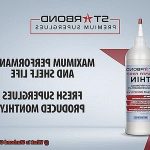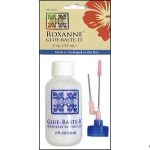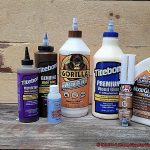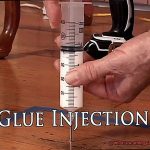Attention all craft enthusiasts and sewing aficionados.
Contents
- 1 Uses of Basting Glue in Sewing
- 2 Benefits of Using Basting Glue for Sewing Projects
- 3 Uses of Basting Glue in Crafting Projects
- 4 Advantages of Using Basting Glue in Crafting Projects
- 5 Types of Basting Glues Available on the Market
- 6 How to Apply Basting Glue Properly
- 7 Removing Basting Glue After Completion of a Project
- 8 Conclusion
Are you tired of wrestling with unruly fabric layers as you try to stitch them together? It’s enough to make anyone want to throw in the towel.
But fear not, my friends, because we have a secret weapon up our sleeves – basting glue. Now, I can hear you asking, “What the heck is basting glue?”
Don’t worry, I’ve got your back. In this blog post, we’re going to dive headfirst into the magical world of basting glue and uncover its purpose and how to use it.
So grab your favorite drink, get comfortable, and let’s embark on a journey to unravel the mystery behind this extraordinary tool.
Uses of Basting Glue in Sewing
The traditional use of pins can be cumbersome, often leaving unwanted holes and failing to secure slippery fabrics. Fortunately, there is a solution that simplifies the sewing process and ensures flawless results: basting glue. In this article, we will explore the myriad uses of basting glue in sewing, ranging from quilting to appliqué work and beyond.
Quilting:
Quilters rely on basting glue to keep their layers aligned before permanent stitching. By applying a thin line of basting glue between the layers, they can prevent shifting and ensure a smooth quilting experience. This adhesive miracle saves quilters valuable time and frustration, guaranteeing that their intricate designs stay intact.
Attaching Fasteners:
Forget about struggling with pins when attaching zippers or other fasteners. Basting glue provides a secure temporary bond, eliminating the risk of damaging delicate fabrics while holding the fastener in place until it can be permanently stitched. Seamstresses can now seamlessly incorporate functional elements into their creations without fear of mishaps.
Appliqué Work:
Appliqué projects involve attaching smaller fabric pieces onto a larger background fabric. Basting glue acts as an invaluable aid, allowing crafters to position their appliqué pieces precisely and securely before stitching them down. With this adhesive secret weapon, intricate designs come to life effortlessly.
Tricky Fabrics:
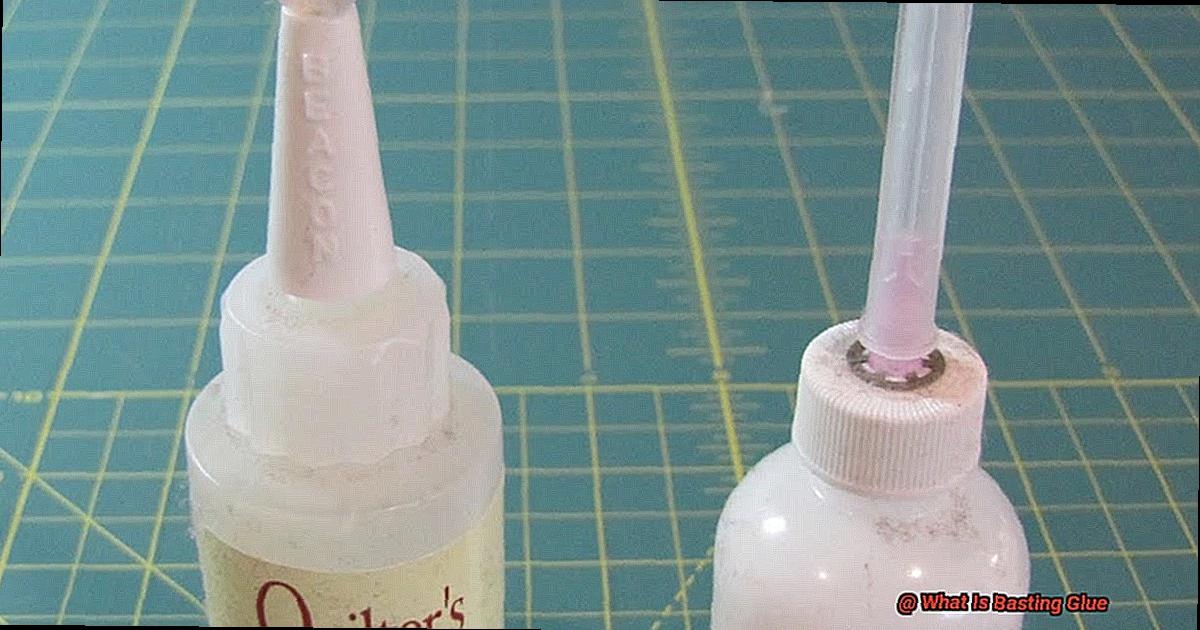
Working with slippery or stretchy fabrics presents unique challenges, but basting glue comes to the rescue. By providing a strong yet temporary bond, it holds these tricky fabrics in place during sewing, ensuring accurate stitching without any slipping or stretching. Seamstresses can confidently tackle silk, satin, or even spandex with ease.
Embellishments:
Basting glue isn’t limited to fabric alone; it can also be used on trims, ribbons, and lace. Whether attaching decorative elements to garments or adding flair to accessories, basting glue provides a temporary hold while you work your magic. Seamstresses can unleash their creativity without worrying about misplaced embellishments.
Alterations and Adjustments:
When making alterations or adjustments to garments, basting glue proves invaluable. For example, if a temporary hem needs to be shortened for fitting purposes, basting glue holds it in place until it can be permanently stitched. This flexible adhesive allows for easy adjustments without compromising the integrity of the garment.
Benefits of Using Basting Glue for Sewing Projects
Whether you’re a seasoned sewist or just starting out on your sewing journey, one thing is for sure – basting glue is the secret weapon you need in your sewing arsenal. In this article, we’ll explore the many benefits of using basting glue for your sewing projects, from its strong hold and precise control to its versatility and time-saving properties.
Say goodbye to those unsightly pinholes and hello to flawless results. Basting glue provides a secure hold without the need for pins or clips. This is especially advantageous when working with delicate fabrics that can be easily damaged by pins. With basting glue, you can achieve a strong hold without leaving a trace.
Unlike traditional basting methods, basting glue offers precise control and accuracy. Its even hold ensures that your fabric stays in place, even when dealing with slippery or stretchy materials. Perfect alignment is now within reach. No more struggling with shifting fabrics or uneven stitches.
Applying basting glue is a breeze with its convenient applicator bottle or pen. Simply apply directly onto the fabric, and it dries quickly, saving you time and effort. Plus, it’s water-soluble, making removal a breeze once your sewing project is complete. No more tedious hand basting or removing temporary stitches.
Pins can leave permanent holes or marks on certain materials, while stitches may cause distortion or puckering. Basting glue offers a secure hold without damaging the fabric, making it an excellent substitute for traditional basting methods. Enjoy peace of mind knowing that your fabric will remain intact.
Quilters rejoice. Basting glue is a game-changer for your quilting projects. It eliminates the need for excessive pinning, saving you time and reducing the risk of accidents with the sewing machine needle. Seamlessly layer your fabrics without the hassle.
When it comes to fitting garments or making temporary alterations, basting glue is your best friend. Say goodbye to time-consuming pinning and re-pinning. With basting glue, adjustments are quick and hassle-free. Ensure the perfect fit without the frustration.
From simple hems and darts to complex garment construction and appliqué work, basting glue is a versatile tool that every sewist should have. Its temporary hold capabilities ensure that you can tackle any project with confidence. Don’t let the limitations of traditional methods hold you back.
Uses of Basting Glue in Crafting Projects
Its water-soluble nature and secure hold make it an indispensable tool in various crafting projects. Let’s explore the exciting world of basting glue and discover its many uses.
One of the primary uses of basting glue in crafting projects is for temporarily holding fabrics or materials together before they are permanently sewn or attached. Unlike pins, basting glue allows for precise placement and alignment of fabrics without leaving visible holes. It ensures that everything stays in place while you work your sewing magic.
But that’s not all. Basting glue is a game-changer in appliqué projects. Instead of traditional methods like hand stitching or fusible webbing, basting glue provides a temporary bond that holds fabric pieces in place while you position and stitch them down. Once your appliqué is complete, simply wash away the basting glue and admire your clean and seamless finish.
Quilters, rejoice. Basting glue is here to simplify your quilting projects. Instead of using aerosol sprays or spending hours pinning layers together, basting glue allows you to temporarily hold the layers of your quilt sandwich in place before quilting. No shifting or puckering here.
But wait, there’s more. Basting glue isn’t limited to fabric-related crafts. It can also be used in paper crafting projects like scrapbooking or card making. Use it to temporarily hold paper or cardstock together when creating intricate designs, allowing for easy adjustments before permanently adhering everything together.
And let’s not forget about mixed media projects. Basting glue is a versatile tool that can hold different materials like fabric, paper, and embellishments together until you’re ready for the final bonding. It acts as a safety net for your creativity, allowing you to experiment and make changes without fear of ruining your masterpiece.
Advantages of Using Basting Glue in Crafting Projects
If you’re on the lookout for a game-changing adhesive that will take your crafting projects to new heights, look no further than basting glue. This versatile and handy glue offers a multitude of advantages that will make your crafting experience a breeze. Let’s dive into the top advantages of using basting glue in your creative endeavors.
First and foremost, let’s talk about the temporary hold that basting glue provides. Unlike permanent adhesives, basting glue allows you to position and reposition your materials until you are completely satisfied with the arrangement. This is especially useful when working with delicate or intricate designs that require utmost precision. With this adhesive, you have the freedom to experiment and make adjustments without fear of ruining your project.
Another remarkable advantage of basting glue is its non-damaging nature. Say goodbye to residue or marks left behind by other adhesives. Basting glue is specifically designed to be safe to use on a variety of surfaces including fabrics, paper, and even certain types of wood. This makes it an ideal choice for crafts where you want to avoid any potential damage or staining. With basting glue, you can confidently apply it to any material without the worry of leaving any undesirable marks.
The versatility of basting glue is truly astonishing. From fabric-based creations like quilting or appliqué, to paper crafts like scrapbooking and cardmaking, this adhesive can do it all. No need to clutter your crafting space with multiple types of adhesives when basting glue can handle them all. It’s a one-size-fits-all solution that simplifies your crafting process.
Time-saving is another key advantage of using basting glue. Gone are the days of manually pinning or stitching materials together. This magical glue provides a quick and easy alternative by allowing you to adhere fabrics or other materials together temporarily. This not only saves you valuable time but also reduces effort in the crafting process. With basting glue, you can complete your projects more efficiently and have more time to explore new creative endeavors.
Now let’s talk precision control. Basting glue often comes with applicators that allow for precise control over the amount and placement of the adhesive. This is especially beneficial when working on intricate designs or when attaching small embellishments. The precise control offered by basting glue ensures that you can achieve clean and professional-looking results every time. No more messy or uneven application, just seamless and flawless craftsmanship.
Washability is a must-have feature for many crafting projects, and basting glue delivers. Many types of basting glues are designed to be washable, making them suitable for use in projects that require laundering such as quilts or clothing. This feature ensures that your creations can withstand the test of time and look their best even after multiple washes. With basting glue, you can create durable and long-lasting masterpieces that are both visually appealing and functional.
Types of Basting Glues Available on the Market
These magical adhesives are a must-have for sewers and crafters alike. Basting glue allows you to temporarily hold fabric together, giving you the freedom to make adjustments before committing to permanent stitches or adhesives. In this article, we will explore the different types of basting glues available on the market and their unique uses. Get ready to unleash your creativity with the power of basting glue.
Water-Soluble Basting Glue:
Water-soluble basting glue is a game-changer for delicate fabrics and projects that require frequent repositioning. This type of glue is made from a water-based formula that easily dissolves when you wash your finished creation, leaving no trace behind. It allows you to experiment with different designs and placements without fear of leaving permanent marks or residue. Whether you’re quilting or working on intricate garments, water-soluble basting glue is your go-to companion.
Spray Basting Adhesive:
If you’re a quilter, then spray basting adhesive will become your new best friend. This adhesive comes in a can and allows for even application over large areas. Simply spray it onto the fabric, and it will hold the layers in place while you work on creating beautiful quilts. Spray basting is quick and efficient, saving you time and ensuring that your fabric stays perfectly aligned throughout your quilting journey.
Stick Basting Glue:
Precision is key when it comes to intricate projects or adding fine details. Stick basting glues, resembling fancy markers or glue sticks, are designed with this in mind. You can apply them directly onto the fabric, allowing for precise application and ensuring that every stitch is in its rightful place. Stick basting glues are perfect for smaller projects or when you need to add intricate details to your creations.
Fusible Basting Glue:
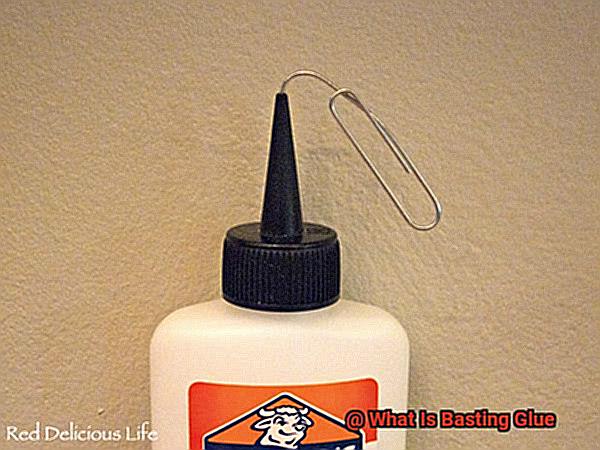
When it comes to attaching appliqués or trims, fusible basting glue is your secret weapon. This type of glue is activated by heat, typically with an iron or heat press. Once heated, it creates a strong bond that holds your fabric together until you’re ready to sew. Fusible basting glue provides the perfect balance between temporary hold and secure attachment, making it a staple for projects that require a little extra staying power.
Specialty Basting Glues:
Sometimes, you need a basting glue that caters to specific fabrics or materials. That’s where specialty basting glues come in. Whether you’re working with leather, vinyl, or other unique materials, specialty glues are formulated to provide temporary holds until you sew or use a stronger adhesive. These glues ensure that your projects are held together securely without causing any damage or leaving residue behind.
How to Apply Basting Glue Properly
Look no further than basting glue. This temporary adhesive is a game-changer when it comes to keeping your materials in place. In this step-by-step guide, we will walk you through the process of applying basting glue properly, ensuring that your fabrics stay put until you are ready to permanently stitch or bond them together.
Choose the Right Basting Glue:
Before diving into your project, make sure to select the appropriate basting glue for your needs. Consider factors such as whether you require a temporary or permanent adhesive and if it is suitable for the type of fabric you are working with. Take note of the manufacturer’s recommendations and consult with sewing experts if needed.
Prepare Your Fabric:
Preparation is key. Ensure that your fabric is clean, dry, and free from any dust or debris that may hinder the adhesive’s effectiveness. Give it a gentle press with an iron to remove any wrinkles, ensuring a smooth surface for the glue to adhere to.
Test the Glue:
Don’t skip this crucial step. Before applying the glue to your main project, test it on a scrap piece of fabric or in an inconspicuous area. This will help you determine if the glue behaves as expected and if it stains or damages your fabric.
Apply the Glue:
Now it’s time to get down to business. Using a small brush or applicator, spread a thin and even layer of basting glue onto one side of the fabric. Be careful not to go overboard with the glue, as excessive application can result in stiffness or visible marks.
Press Firmly:
Once you’ve applied the glue, carefully place the second piece of fabric on top, aligning the edges as needed. Press down firmly to create a strong bond between the two pieces. This will ensure that your fabrics stay perfectly in line while you work your magic.
Let it Dry:
Patience is a virtue. Allow the basting glue to dry completely before moving or working with the fabric. Keep in mind that drying times may vary depending on the type of glue used, so refer to the instructions provided by the manufacturer.
Removing Basting Glue After Completion of a Project
You’ve completed your sewing or crafting project, and now it’s time to remove that basting glue. But don’t let the thought of sticky residue rain on your victory parade just yet. In this guide, we’ll walk you through several methods to safely and effectively remove basting glue from your finished masterpiece. So, let’s dive in and bid farewell to sticky situations.
Method 1: The Warm Iron Method
Say hello to your trusty iron. Set it to a low heat setting and place a clean cloth over the area with the basting glue. Gently press the warm iron onto the cloth for a few seconds. Voila. The glue will soften, making it easy to peel away with your fingers or tweezers.
Method 2: Adhesive Solvent Savior
Time to bring in some reinforcements. Purchase an adhesive solvent designed specifically for removing glue. Apply a small amount of solvent to a clean cloth, then rub it onto the basting glue, allowing it to penetrate for a few minutes. Wipe away the softened glue with a clean cloth or paper towel. Victory is yours.
Method 3: Freeze and Chip Away
Let’s give that glue the cold shoulder. Seal your project in a plastic bag and pop it into the freezer for several hours or overnight. Once frozen, grab a blunt tool like a spoon or credit card and gently chip or scrape away the brittle glue. Chipping away at problems has never been this satisfying.
Aftermath: Give It a Final Touch
Once all traces of basting glue have bid their final farewell, follow the cleaning instructions for your specific fabric or material. This step ensures any remaining residue is eliminated, leaving you with a clean and professional finish.
CdEf3AZ3Zuo” >
Conclusion
Basting glue is a versatile adhesive used in sewing and crafting projects.
It is specifically designed for temporary bonding, allowing fabrics to be held together temporarily before permanent stitching. This glue is often water-soluble, making it easy to remove once the project is complete.
Basting glue provides a quick and efficient way to secure fabric layers or appliques in place, eliminating the need for pins or clips. Its non-permanent nature also allows for adjustments and repositioning during the sewing process.
Whether you’re quilting, hemming, or working on any other sewing endeavor, basting glue can be a helpful tool in your arsenal.


